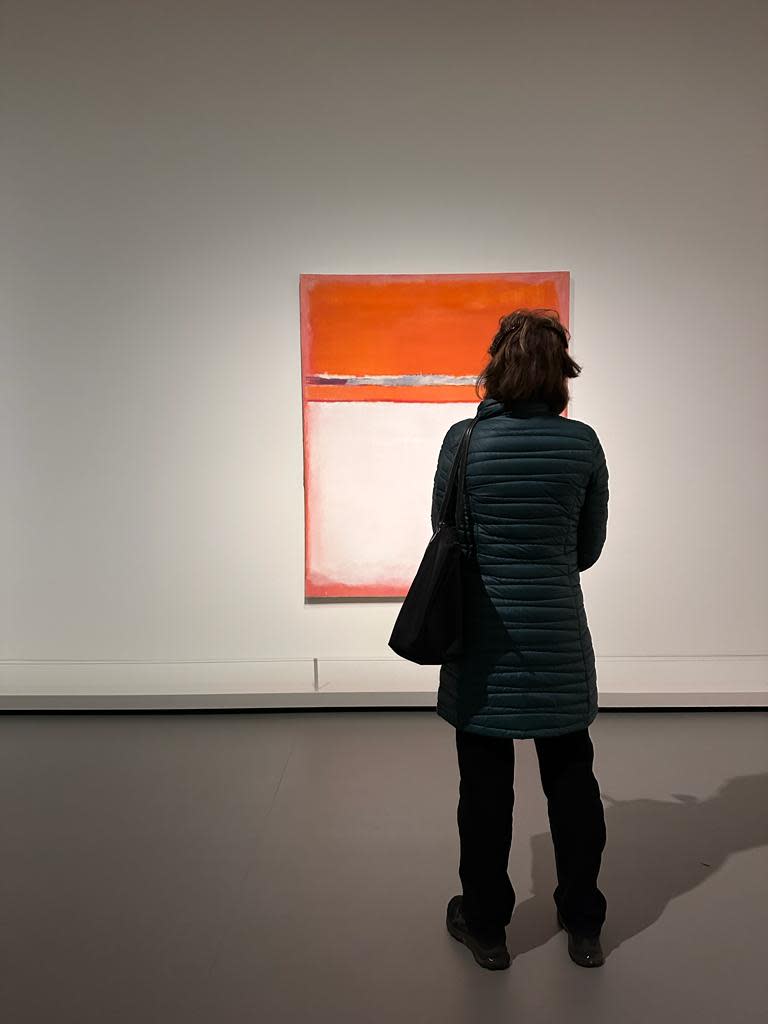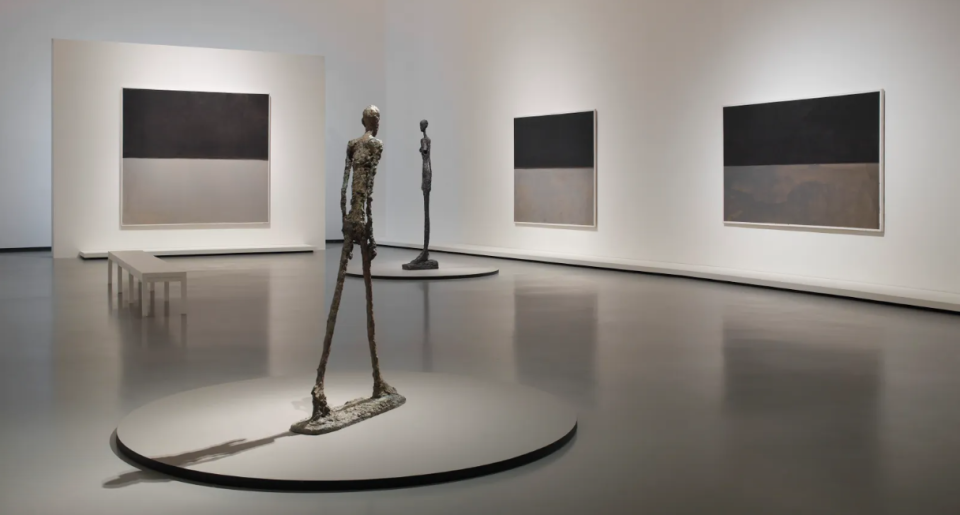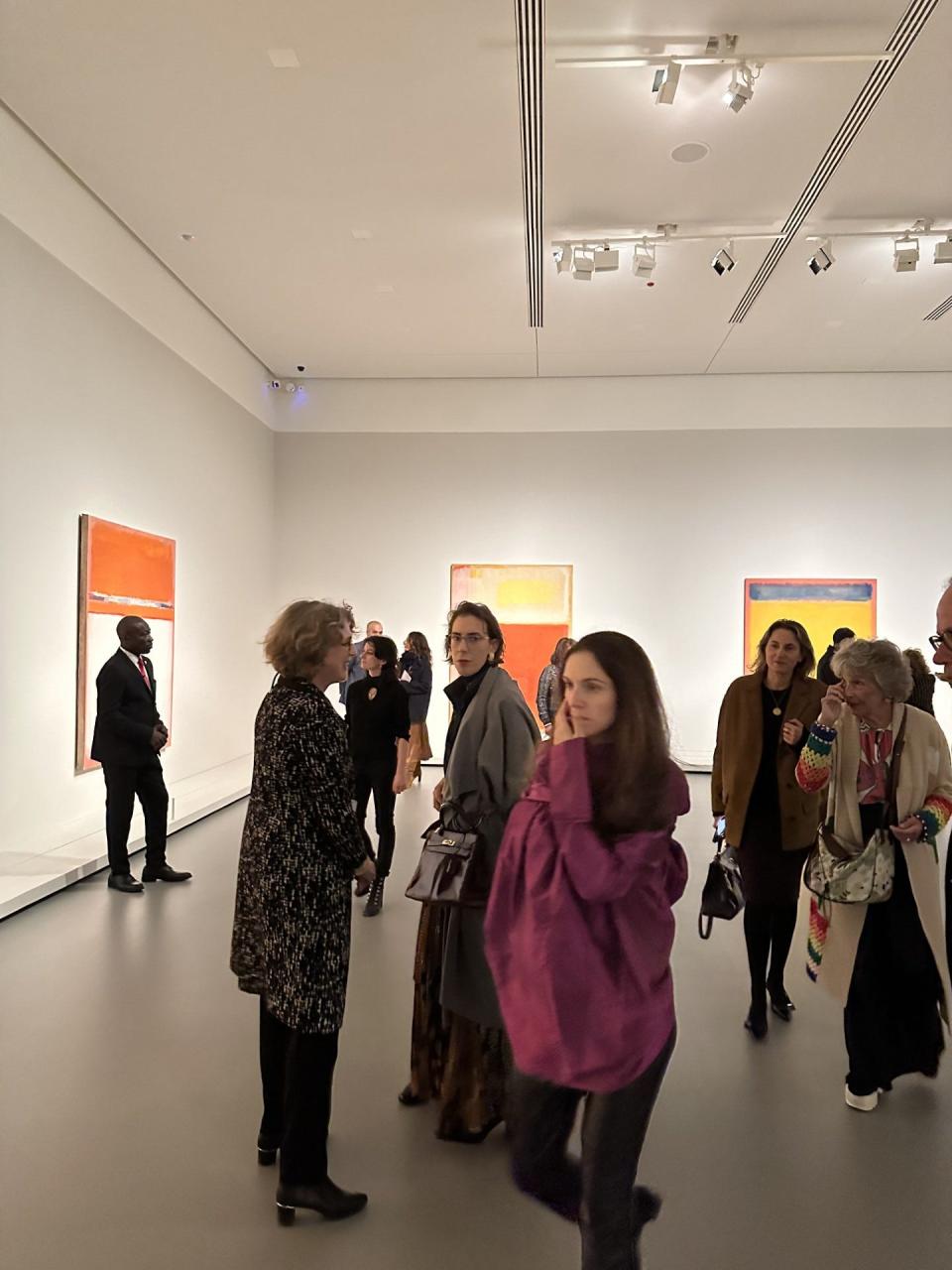Two paintings from Utica take a trip to Paris
- Oops!Something went wrong.Please try again later.
The Munson Museum of Art loaned two of Mark Rothko’s paintings to a retrospective exhibition at the Foundation Louis Vuitton in Paris. The show will run through April 24.
The two works – “Untitled: Abstraction Number 11” and “Number 18” – showcase the moment Rothko surrendered his early experiments in surrealism to the abstract rectangular forms he is best known for today.
Munson's contributions to the exhibit were noted in The New York Times and Vogue.

The goal was to tell the story of Rothko’s life through the art he made, according to the Foundation Louis Vuitton. The retrospective is displayed in chronological order. It hosts 115 of Rothko’s paintings and fills four floors of the museum.
Munson Director and Chief Curator Stephen Harrison attended the exhibition’s opening night.
“It was a magical experience, every room was packed with glitterati from the art world,” said Harrison. “To watch others contemplate Rothko's paintings and come to their own revelations was so special.”
No museum has attempted a Rothko exhibition of this scale since the 1990s. But, not for lack of effort – none could afford it.
“The Rothko’s journey to Paris was significant for the Munson collection,” said Munson Communication Manager Steve Howe. “This was the first time the paintings traveled outside of the States.”
For the next six months an early color field painting will be on view in Munson’s Cardamone Gallery, a loan from Christopher Rothko, son of Mark Rothko and celebrated New York School painter. “Untitled” was completed in 1954 and features an expanse of green, gold, and orange.
“Christopher was extremely generous to lend us such an extraordinary canvas,” said Harrison. “Now locals can meditate on something fresh and beautiful while our paintings are over in Europe enjoying a croissant.”
Rothko's personal life
“Untitled: Abstraction Number 11,” painted in 1947, predates Rothko’s signature color field paintings and features a cacophony of orange, blue, black and silver. “Number 18” was painted in 1951 and features striking vermilion and white on a large canvas.
Rothko and his wife – Mary Alice Beistle – divorced a year before he created “Untitled: Abstraction Number 11.”
“The paintings are very different aesthetically – they bridge a gap in his career where he stepped away from painting completely,” explained Harrison. “Rothko went into a deep depression and emerged with a new way to express his emotions: a new signature style.”

Much of Rothko's later work revolves around the depiction of emotion. “The colors either magnify your feelings or they change your heart,” explained Harrison. “These works are timeless because they connect so well with human emotion; they are not only a reflection of his life but they widen our perception of what it means to truly be alive.”
Harrison noted that the color field painting – the later of the two – was a moment of revelation. “It is at this exact moment Rothko changes direction in his life,” said Harrison. “This painting offers an indication that he was no longer in transition, he had pivoted.”
The retrospective takes the viewer from surrealism to the abstract – ending with the colorless canvasses of his late work. Mark Rothko took his own life in 1970.
Christopher Rothko commented that “the arrangement of the work induces a very meaningful dialogue.”
What makes a painting a masterpiece?
Harrison admitted the difficulty that comes when aiming to determine a great painting from a masterpiece.
“What I’ve found to be consistently true is that when I see a masterpiece it takes my breath away – it stops me dead in my tracks,” described Harrison. “Not every artist is going to paint a masterpiece every time; sometimes they lay flat but other times they jump out and grab you.”
Several museum directors went to the opening night of the exhibition including Jean-Luc Martinez, former director of the Louvre Museum.
“Rothko had an enormous place in the history of 20th century art,” said Harrison. “Museum directors – no matter what period they represented – showed up to the exhibition to respect his work.”
Acquisition and travel
Munson acquired the paintings in the 1950s after being advised by art collector Edward Wise Root.
Root advised Munson to acquire “Untitled: Abstraction Number 11” in 1953 and bought the other painting for his own personal collection. The museum later received “Number 18” after he passed away in 1957.
Due to the fragility of the paintings the Williamstown Art Alliance determined travel frames needed to be made to protect the edges.
“Rothko always wanted his paintings to be shown without frames; he painted all the way around the canvas, onto the edge as well,” said Harrison. “He wanted the viewer to contemplate his work as pure form on a wall.”
The paintings were wrapped in acid-free conservation materials, placed in custom foam frames, and double-crated. A courier from Munson traveled with the frames on a cargo plane to Belgium and drove them to Paris from there.
“The act of lending to exhibitions deepens also deepens our knowledge as a museum,” explained Harrison. “In Paris I got the chance to see our paintings as just two pieces of the whole story.”
The takeaway

Harrison believes there’s a lesson to learn from this retrospective.
“Rothko was a man who wasn’t afraid to be vulnerable,” emphasized Harrison. “Nowadays we channel our pain into rage or violence but this exhibition spotlights a man who turned his emotions into art.”
As Rothko aged his style incorporated more abstract forms. “The rectangular shapes he used were not intended to be rational but emotional,” said Harrison. “This retrospective highlights themes of love, despair, and friendship.”
The only other contributing artist was a Swiss sculptor named Alberto Giacometti. “You can see the intertwining of both of their artwork,” said Harrison. “It is a powerful display of their enduring friendship.”
This article originally appeared on Observer-Dispatch: Munson contributes to the Rothko retrospective in Paris

